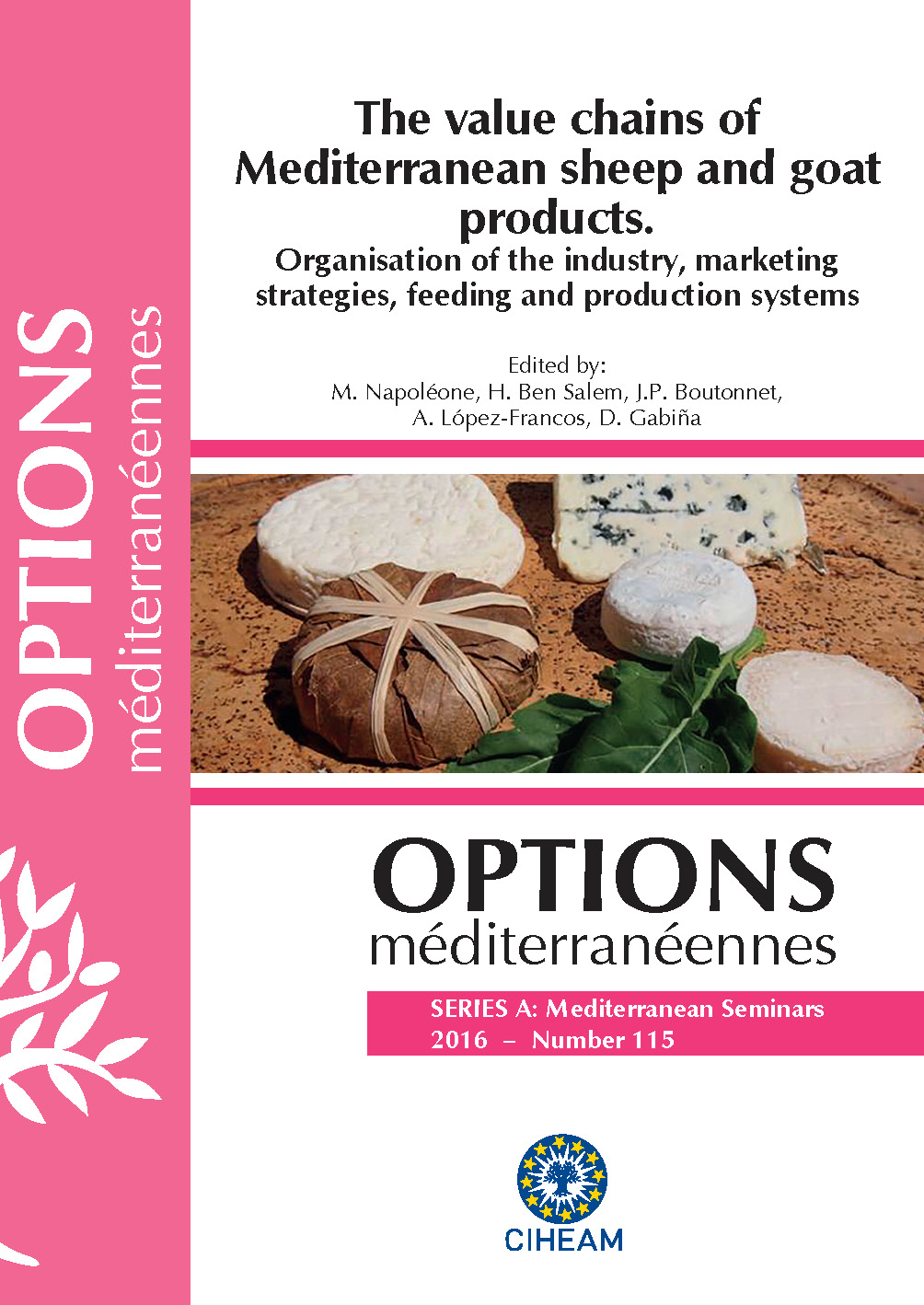| Article précédent | p. 549-552 | Article suivant |
Study of the between-goat variation in feed efficiency with a high-concentrate diet
Feed efficiency in ruminants is largely linked to rumen digestive efficiency. Moreover, some recent research pointed out that feeding behaviour influences rumen pH. This work showed that twelve dairy goats (six Alpine and six Saanen) characterized by very different intake rates with a standard diet increased their intake rate when the diet was changed to a high concentrate one. The between-goat ranking for intake rates was not modified (P = 0.70) by the shift in diet composition. Organic matter digestibility of the high concentrate diet decreased as level of intake increased, with a 2.2 points difference between the Alpine and Saanen breeds. This difference is mainly due to a difference in cell wall digestibility and can be explained neither by the rate of intake, nor by the sorting behaviour or by the fat corrected milk yield. Feed efficiency was, in this trial, linked to metabolic efficiency. Both items were explained by the fat-corrected milk yield. Feed efficiency was not correlated with digestibility and there was no difference (P = 0.72) between breeds. Differences between animals in feed efficiency were explained by differences in metabolic efficiency.
L’efficacité alimentaire est essentiellement liée à l’efficacité du rumen. Des études récentes ont montré que le comportement alimentaire influence le pH du rumen. Ce travail a mis en évidence que douze chèvres (six Alpine et six Saanen) présentant une grande variabilité inter-animaux de leur vitesse d’ingestion avec un régime standard gardaient la même hiérarchie avec un régime riche en concentré, même si leur vitesse d’ingestion augmentait. La digestibilité de la matière organique du régime riche en concentré a été influencée négativement par le niveau d’ingestion. Les chèvres de race Alpine ont présenté, à ingestion égale, une digestibilité plus élevée que les chèvres Saanen. Cette différence est principalement due à une différence de digestibilité de la paroi végétale. Elle n’est pas liée à la vitesse d’ingestion, au tri effectué par les animaux ou à la production laitière. Dans cet essai, l’efficacité alimentaire était liée à l’efficacité métabolique. Ces deux paramètres étaient liées à la production laitière standard. L’efficacité alimentaire n’a pas été corrélée à l’efficacité digestive et il n’y a pas eu de différence entre races. Les différences entre animaux pour l’efficacité alimentaire étaient liées aux différences d’efficacité métabolique.
- [ Afficher ]
- [ Télécharger ]
- [ Exporter la citation ]
Vous pouvez télécharger la citation au format :
- [ Imprimer ]
-
Mots-clés
CHEVRE, COMPORTEMENT ALIMENTAIRE, EFFICACITE ALIMENTAIRECiter cet article
Giger-Reverdin S., Sauvant D. Study of the between-goat variation in feed efficiency with a high-concentrate diet. In : Napoléone M. (ed.), Ben Salem H. (ed.), Boutonnet J.P. (ed.), López-Francos A. (ed.), Gabiña D. (ed.). The value chains of Mediterranean sheep and goat products. Organisation of the industry, marketing strategies, feeding and production systems. Zaragoza : CIHEAM, 2016. p. 549-552. (Options Méditerranéennes : Série A. Séminaires Méditerranéens; n. 115). Joint Seminar of the Subnetworks on Nutrition and on Production Systems of the FAO-CIHEAM Network for Research and Development in Sheep and Goats, 2015/06/16-18, Montpellier (France) . http://om.ciheam.org/om/pdf/a115/00007330.pdf



